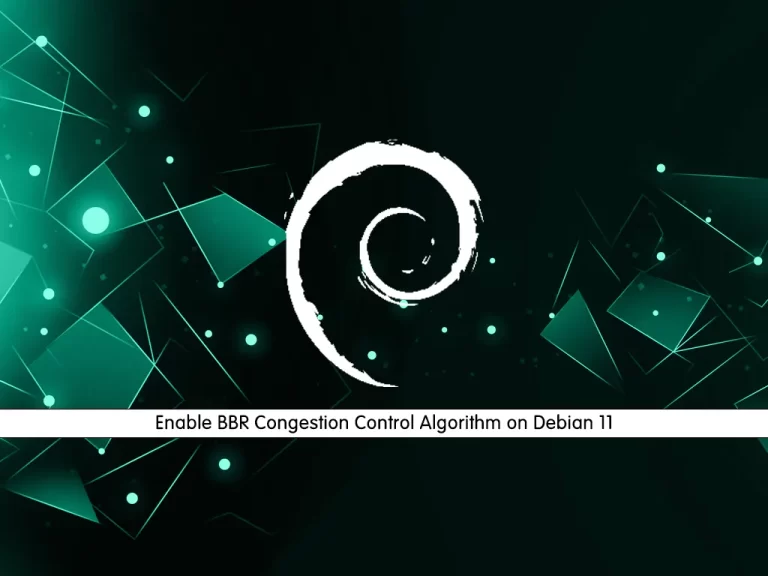Share your love
How To Enable BBR on Debian 11

This guide intends to teach you How To Enable BBR on Debian 11.
BBR (“Bottleneck Bandwidth and Round-trip propagation time”) is a new congestion control algorithm developed at Google. Congestion control algorithms — running inside every computer, phone, or tablet connected to a network — that decide how fast to send data.
For a given network connection, it uses recent measurements of the network’s delivery rate and round-trip time to build an explicit model that includes both the maximum recent bandwidth available to that connection and its minimum recent round-trip delay. BBR then uses this model to control both how fast it sends data and the maximum amount of data it’s willing to allow in the network at any time.
Enable BBR Congestion Control Algorithm on Debian 11
To enable TCP BBR, you must log in to your server as a non-root user with sudo privileges. To do this, you can follow our guide the Initial Server Setup with Debian 11.
Now follow the steps below to complete this guide.
Enabling TCP BBR on Debian 11
First, you need to update and upgrade your local package index with the following command:
sudo apt update && sudo apt upgrade -yThen, you need to check your existing congestion controls on your server.
Check Existing Congestion Control Algorithms
Typically, Linux uses reno and cubic algorithms.
At this point, you need to run the following command to check what existing TCP congestion controls are in place:
sudo sysctl net.ipv4.tcp_congestion_controlOutput
net.ipv4.tcp_congestion_control = cubicIn the above output, cubic is employed in our system, but your output may show different results.
Next, list available TCP congestion control algorithms on your server by using the following command:
sudo sysctl net.ipv4.tcp_available_congestion_controlOutput
net.ipv4.tcp_available_congestion_control = reno cubic
From the output, reno and cubic are available, and once BBR has been added/enabled, this should feature BBR.
Add TCP BBR on Debian 11
Now that you have checked the basics to confirm the available algorithms, you need to open the sysctl.conf file. Here we use the vi editor to open the file:
sudo vi /etc/sysctl.confAdd the following content to the file:
net.core.default_qdisc=fq
net.ipv4.tcp_congestion_control=bbrWhen you are done, save and close the file.
Then, reload the configuration file with the command below:
sudo sysctl -pOutput
net.core.default_qdisc = fq
net.ipv4.tcp_congestion_control = bbrAt this point, you need to verify that BBR is enabled and active as the new TCP congestion control by using the following command on Debian 11:
sudo sysctl net.ipv4.tcp_congestion_controlOutput
net.ipv4.tcp_congestion_control = bbr
Also, you can use the command below to verify it:
lsmod | grep bbrOutput
tcp_bbr 20480 2
Finally, list available TCP congestion controls on your server again:
sudo sysctl net.ipv4.tcp_available_congestion_controlYou should see BBR in your list:
Output
net.ipv4.tcp_available_congestion_control = reno cubic bbrThat’s it. You have successfully added BBR to your server.
Conclusion
At this point, you have learned to Enable TCP BBR on Debian 11.
Hope you enjoy it.
You may be inserted in these articles:
Install and Use Podman on Debian 11
Install and Configure Nextcloud on Debian 11



